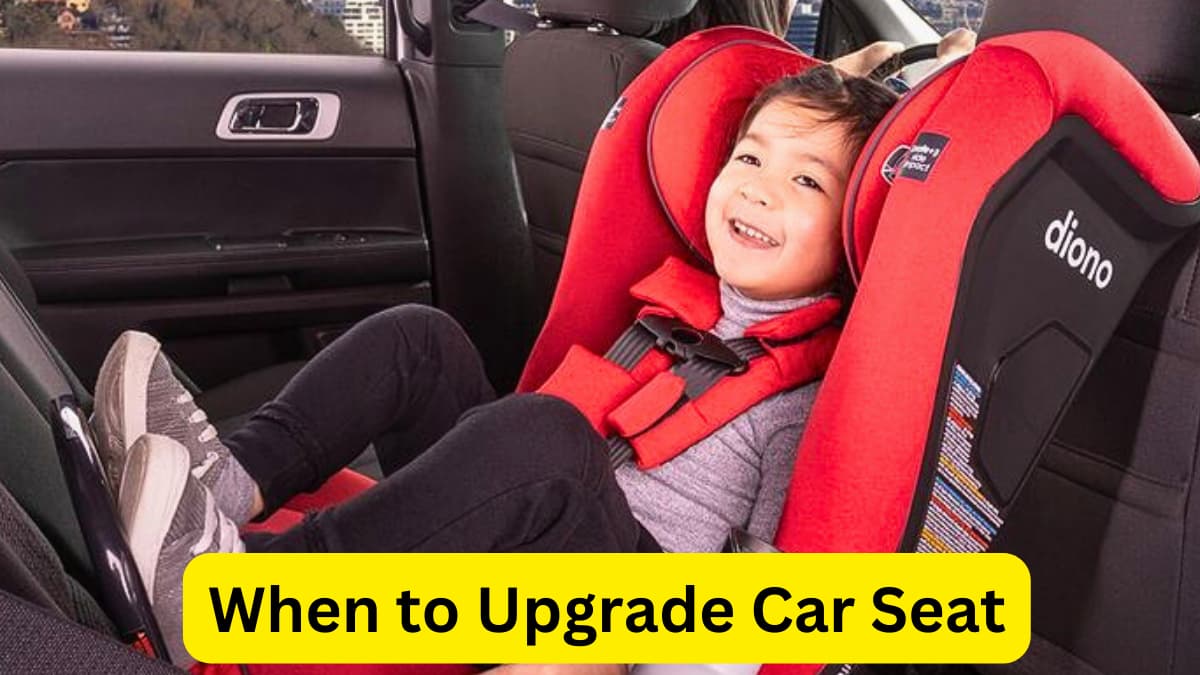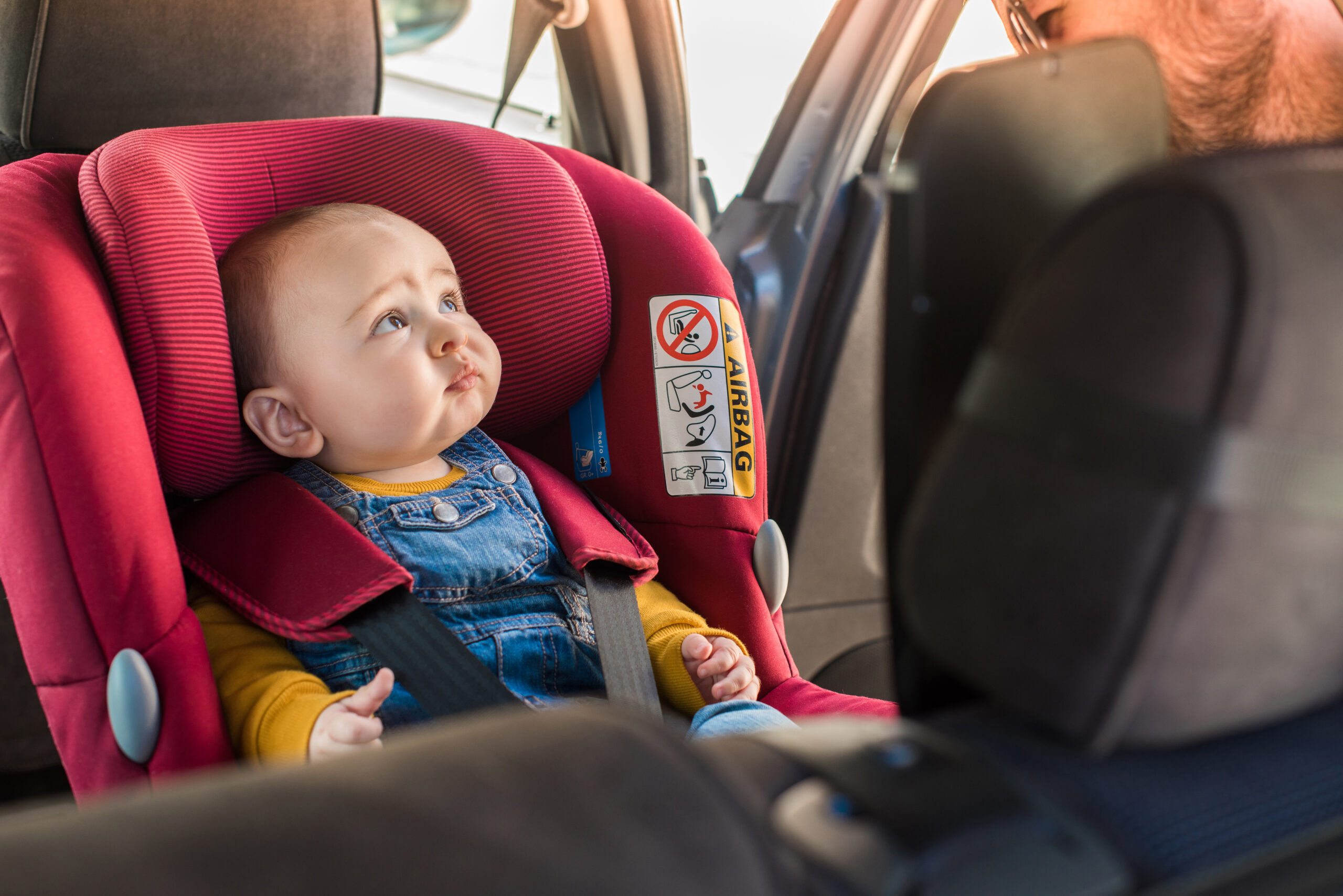When to Upgrade Car Seat? – Complete Guide for Parents
Welcome to our guide on When to Upgrade Car Seat
An important question for most parents is When to Upgrade Car Seat. The car seat needs to be upgraded at the right time because –
- Children’s safety needs evolve as they grow
- There are maximum height and weight requirements in addition to state laws regarding age
- Proper fit saves your child’s life in the event of an accident
Giving a general answer is difficult as the timing depends on the child’s age, weight, and height. Our article goes through every small detail to help you find out the exact time to upgrade the child’s car seat.
Do you want to know When to Upgrade Car Seat?
[lwptoc]Infant Car Seat
The rear-facing, bucket-style infant seats are perfect for keeping your baby safe for the first couple of years. They have a five-point harness and a newborn baby insert for support.
The five-point harness uses 5 straps to secure your baby in the car seat. Two will go over the shoulder, two around the hips, and the last will go between the legs.
All these straps meet at a central point to evenly distribute the impact in case there’s an accident. In due time, the child will outgrow the infant car seat, and you’ll need to switch to the convertible seat.
That will happen in between 9 months and 2 years.
When to Upgrade to a Convertible Seat:
Before making the switch to a convertible car seat, it’s important to consider factors such as the child’s height and weight, as well as the convenience and ease of use for the caregiver.
Here are the factors to consider for upgrading to a convertible seat –
- Once the baby reaches the maximum height or weight (generally 30-32 inches and 30-35 pounds)
- The child’s head is less than an inch from the car seat when the baby is sitting there
- When the infant seat seems too heavy to carry
Convertible Car Seat
A convertible car seat can be used as both rear-facing and forward-facing. However, organizations like AAP and NHTSA recommend that you should keep the convertible seat rear-facing as long as possible.
That’s because the rear-facing seat gives extra security in head-on collisions. Babies have larger and heavier heads in proportion to their bodies, putting them at high risk of spinal cord injuries during accidents.
The rear-facing car seat offers better support to the baby’s head and neck if there’s a collision. So, wait until the baby’s age is 24 months minimum before you use the convertible as a forward-facing car seat.
When to Upgrade to Forward-Facing Seat
- Once the maximum weight and height limits are reached for rear-facing seats
- The gap between the child’s head and the top of the car seat is less than 1 inch indicating inadequate space for head protection in the event of an accident
When to Upgrade to Booster
- The child reaches the maximum weight and height limit (45-50 inches and 60-65 pounds)
Booster Seat
Unlike the previous two types, booster seats don’t use any straps. Instead, they raise the child’s height so that the seat belt can fit them.
There are 2 options to choose from; high-back and backless. High back seats come with a backrest, headrest, and sometimes side wings to give additional protection to the child.
While backless boosters only raise the child to make them suitable for the safety belts. They are able to provide enough protection to your child as well but don’t offer side-impact protection, unlike the high-back one.
The kid has to be at least 4 years old to transition to the booster seat from the convertible. Otherwise, they may fail to maintain the proper posture resulting in injuries. Initially, it’s better to use high-back booster seats before moving on to the backless ones.
Once the kids are mature enough to sit with correct posture, which usually happens between 8 and 12 years of age, they can start using regular seats.
When to Upgrade to a Regular Seat
- Between the age of 8-12, but only if they are able to sit with the correct posture
- Tall enough to sit without sliding out of the seat belts during sudden breaks
| Type of Car Seats | Age | Weight Limit | Height Limit | When to Upgrade |
| Infant Seat | Birth to 2 years | 30-35 pounds | 30 to 32 inches | Between 9 months to 2 years |
| Convertible Seat | Birth to up to 5 years | 60-65 pounds | 45-50 inches | 4-5 years |
| Booster Seat | 4-12 years | 80 pounds | 50-57 inches | 8-12 years |
Additional Tips Regarding When to Upgrade Car Seat
- Read the owner’s manual before you upgrade to check if the new seat will fit the car
- Upgrade before the car seat passes the expiration date (You can find it on the seat label)
- Follow weight and height limits for car seats
- Ensure you installed the new car seat correctly
- You may use the trade-in event to buy a new upgrade
- Do the pinch test on the strap fabric to check if it needs more tightening
Conclusion about When to Upgrade Car Seat
One of the big reasons for death among children is motor vehicle accidents. Research shows only a small proportion of parents are well aware of car seat safety considerations.
So, as a parent, you are required to educate yourself about car seats and learn when to upgrade them. It is recommended to upgrade child car seats as soon as the baby meets the requirements of height and weight limit to ensure maximum safety.
That way, you’ll if something bad happens on the road, your baby will be safe. i hope now you have understood When to Upgrade Car Seat.
Last Updated on April 17, 2024 by Brian Beasley


